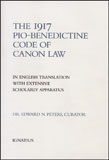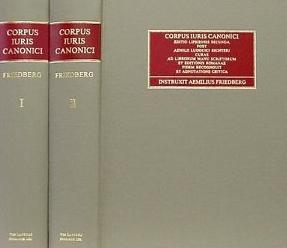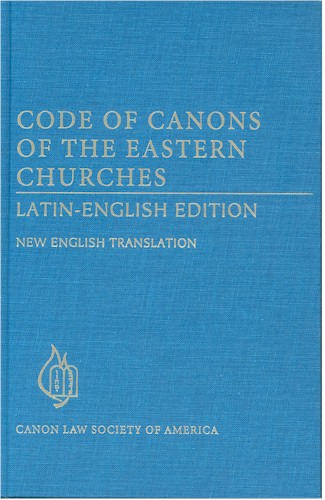|
To work for the proper implementation of canon law is to play an extraordinarily constructive role in continuing the redemptive mission of Christ. Pope John Paul II |
|
|
|
|
Resolution 1152 x 864 |
Updated 3 jan 2013 |
Resources on American Sign Language and Liturgy, II |
|
This essay was originally submitted to Adoremus Bulletin as a letter to the editor, but when they declined to publish it, I decided to make it available on my website.
See also:
In March 2000, Adoremus Bulletin published a short, but more balanced, assessment of, among other things, American Sign Language in the liturgy. To see this article, click here.
|
My wife and I have been
supportive readers of AB since its first issue. As parents of a
profoundly deaf child, however, we are chagrined at AB’s consistently
suspicious attitude toward sign language in the Mass. We have reluctantly
concluded that this is one liturgical topic, out of the myriad that you handle
so well, in which you simply have no
expertise. I wrote you once before attempting to clarify some points on ASL in
the liturgy, but you declined to run my letter. (Readers who would like
see it can go
here). Now I write again, first
about a repeated error on your part, but more, about the breath-taking
demonstration of ignorance that you enabled one M. J. Moses to show in your letters
column (AB,
Feb. 2001). You wrote (p. 7) about some group wanting to have ASL recognized “as an official liturgical language, that is, a language that may be used as a basis from which other translations may be made.” Your definition is, as I tried to explain before, wrong. A liturgical language is any language in which it is recognized by competent ecclesiastical authority that the minister can celebrate the rite licitly. Hence, English is a liturgical language in that Rome has told us that the priest can confect the Eucharist directly in English without, say, having to whisper Latin words of consecration over the bread and wine. (Remember years ago when the priest used to have to read the Gospel first in Latin and then in English for it to be licit? Same issue, different times.) Now, all liturgical translations are made from the Latin editio typica, and it alone is the standard to which all translations are held. When we critique the awful ICEL translations of the Mass, we don’t, for Heaven’s sake, assess their English renderings in light of the Norwegian or Vietnamese or Iroquois translations even though, consistent with your description, we could, since all three are liturgical languages. Rather, we critique the English in light of the Latin. If and when ASL is recognized as liturgical language, it will be because Rome recognizes ASL’s ability to adequately reflect the Latin of the Holy Mass, and not the English (or scores of other languages) into which the liturgy has been translated. Please help your readers keep this distinction straight. Now, regarding M. J. Moses’ letter (p. 8), honestly, I don’t know where to start, but I’ll stop after six points. I’ll also try to refrain from repeating points already dealt with in my letter cited above. Moses asserts: 1) “ASL does not explicitly use the auxiliary [sic] verb to be.” Nonsense. ASL uses to be frequently. It’s Latin that likes to drop esse. Dominus vobiscum, anyone? 2) “Without am, how could God’s name be signed…I am who am?” My kids had no problem signing this phrase in either ASL or SEE. And they didn’t even fingerspell it. Does Moses seriously think that Deaf Catholics cannot even sign God’s name, whether in a liturgy or out? 3) “As a visual language, ASL is actually not as inflected as the English or Latin languages.” Three responses: (A) Inflection has absolutely nothing to do with whether a language is visual. Malay is not a visual language, and it is almost completely uninflected. Inflection has little to do with a language’s inherent expressive power; it’s just one way among others of indicating things like number, tense, and case. (B) Blithely lumping English and Latin together as parallel examples of inflected languages overlooks huge differences in the degree of inflection in each. (C) ASL does have some inflection, but so what if it didn’t? Who is to say that only highly or semi-inflected languages are capable of being liturgical languages? ASL, English, Latin, and Malay, simply use different ways to convey the same basic grammatical and conceptual information. 4) “Syntax is the practical application, usage, and expression of the established grammar, all of which ASL lacks.” This assertion is pure buffoonery! No one with the slightest knowledge of ASL could possibly make, or help to spread, such an ignorant remark. My wife is in her fifth semester of sign language studies. What does Moses think she has been doing for two and a half years? Making random gestures in the air? A “language” that has no established grammar is not even a language at all. Yet, more than 200 American colleges and universities classify ASL studies as “foreign language” studies. Here’s another thought: in some noteworthy ways (e.g., its flexible word order, inflected classifiers, and preference for placing verbs at the ends of phrases) ASL is closer to Latin than English is! 5) Complaining about a multiplicity of signs, Moses urges “Must we not speak the good news correctly and uniformly?” Two responses: (A) Anybody who, like Moses, is still looking up the words to the Our Father in a sign language dictionary is not remotely qualified to judge whether the signing was correct in the first place, but (B) Whence comes this sudden concern for “uniformity” of terms? Which of the following terms would Moses say correctly identifies what the priest confects at Mass: Eucharist, Sacred Species, Holy Communion, Blessed Sacrament, Viaticum, Bread of Life, Cup of Eternal Salvation, Body of Christ, etc? So much for there only being only one correct way to refer to the same crucial reality, even in English! The real concern here is obviously not so much with consistency of expression when referencing a particular thing, but with the accurate representation of the pertinent text. No one wants an interpreter to sign "This is our Bread of Life" when the priest says "This is my Body." But this legitimate concern has to do with the fidelity of the interpreter, not the nature of sign language. ASL is quite capable of expressing either thought equally well. 6) "[American] deaf people…should use an [English] missal to follow the liturgy.” Sounds plausible, at first, until one consideres: (A) English is a foreign language to the congenitally deaf. ASL is not simply English rendered in manual form. It is a different language entirely, and people whose native language is ASL have no more an automatic grasp of English than, say, Americans have of Navaho. Moreover, for reasons too numerous to list here, reading any language during Mass is a major distraction to many deaf persons (Moses suddenly forgot his earlier concern about promoting anything that distracts from the attention due to the priest); (B) What does Moses suggest the Deaf do during homilies, general intercessions, and other places where the celebrant can licitly depart from the printed text? and (C) What do we do with our deaf 5 year old today, she being too young to read anything yet? Have her sit in stony silence in her own quiet world? We have a deaf Catholic daughter to raise right here and now, and if anybody thinks we’re not going to convey the glories of the Catholic Mass to her in any way we can, including real-time communication in her language of sign, they can just….oh, enough of this. As I noted in the first letter you declined to run, just two days after Vatican II closed, the Holy See approved the use of sign language through the entire Mass by both priest and people. As the pope recognized, this is the only way many Deaf have to understand what is going on at Mass. As to the much more technical question of whether ASL should be a liturgical language, well, on linguistic grounds alone, that question is obviously beyond the ken of almost everyone whom I have seen take up sides on this debate in the pages of AB. So let me put it this way: my wife and I are sick and tired of hearing liturgical liberals taking a smattering of sign language and hijacking it for misuse in their own English translation plots, and we are equally irked at hearing liturgical conservatives who, instead of attacking the flawed premises of the liberal liturgical agenda (I showed you one great way to do this above), grossly misapply their own erroneous ideas about sign language as cudgels in their battles. Well, to both sides in this debate, we say: Stop tarring ASL with ICEL’s agenda-brush. Just stop it. Leave the Deaf, those who love them, and most of all their language, out of your fights.
Occasionally, despite even the Vatican’s approval of sign language at Mass, we still get a withered look from somebody who feels distracted by our signing the readings or prayers to our deaf daughter. When that happens, we remember that Jesus speaks to our Margaret in sign, and that anybody who dares to suggest that she pretend otherwise at Mass should first try to live in her world, or ours, for a day.
Dr. & Mrs. Edward Peters
|





